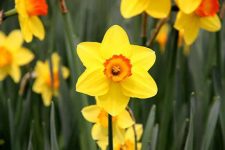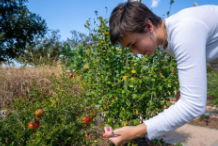Swamp white oak makes a great street tree. Pagoda dogwood is a good option near power lines. These local sources have more Kansas and Missouri tips.
Over the decades, we’ve had love affairs with specific types of trees — filling entire neighborhoods with hundreds or thousands of single species.
Experts say cities need variety to prevent situations where a fast-moving fungus or insect, or extreme weather, kills many trees at once.
So if you’re a homeowner keen on adding trees to your yard, what should you plant?
Kim Bomberger, of the Kansas Forest Service, puts it this way: “Dare to be different.”
“Just last week, I told an audience to look around their own yard and neighborhood and pick something different,” she said, “to build landscape resiliency.”
Here are links where you can read about the best-performing trees in our region — and some that you should avoid when you spot them at garden centers.
Remember: Just because your local store stocks a certain tree species, doesn’t make it a good choice. Tree experts continue to spot maple varieties for sale that don’t do well in the lower Midwest. They also see ash trees and Callery pears at garden centers, but widely agree that homeowners should not plant either.
Multistudio’s Kansas City tree lists
A Kansas City landscape and architecture firm asked top experts in the region to rank hundreds of trees. Here you’ll find their favorites, broken down into separate lists for evergreens and for small and large deciduous trees. You’ll also find the best options for planting right next to the street, where pavement can pose a challenge. (Check with your city before planting street trees, because some cities set rules about which species to plant.)
You’ll also find a list of options that make experts groan. The top no-no: Bradford pear, an invasive ornamental.
Kansas Forest Service resources by region
The Kansas Forest Service has lists of top performers by region.
Whether you need a drought-tolerant option for south-central Kansas, or want to know the biggest trees that will do well in Colby, this website can help.
The Kansas Forest Service also offers a guide to planting trees. If you want an affordable way to buy many trees or shrubs at once, the agency also sells them for limited windows of time each spring and fall.
So does the Missouri Department of Conservation.
Want to stick to native options?
The resources above include a mix of native and non-native species.
But some people feel strongly about sticking with native species to support regional wildlife. The Missouri-based project Grow Native publishes top 10 lists, including the best flowering trees and ideas for what you can safely plant near utility lines.
The Powell Gardens website includes a curated list of native trees that do well in eastern Kansas and western Missouri. And former Powell Gardens Director of Horticulture Alan Branhagen has published two thorough guides to landscaping with trees, shrubs and flowers native to the Midwest.




